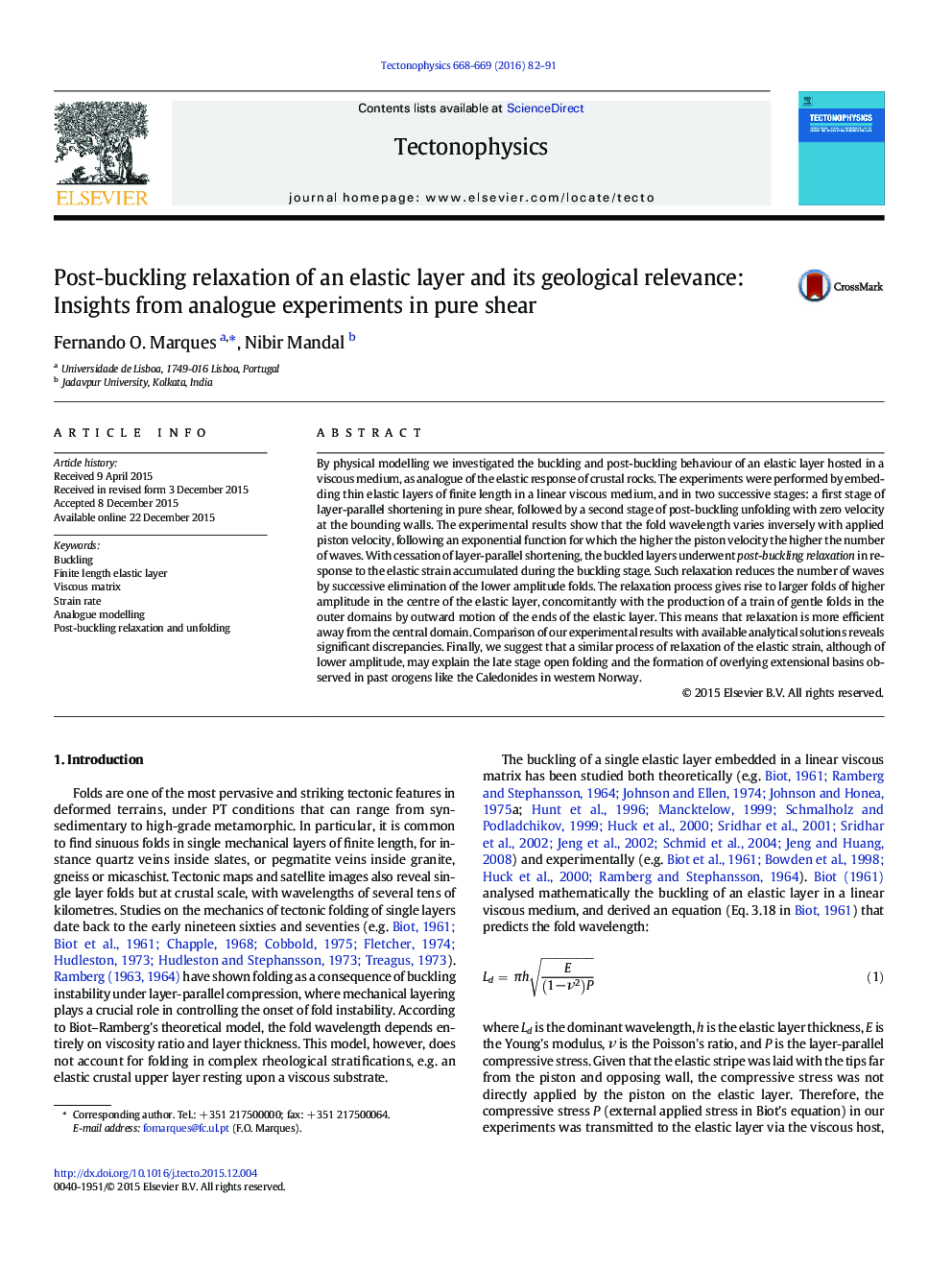| کد مقاله | کد نشریه | سال انتشار | مقاله انگلیسی | نسخه تمام متن |
|---|---|---|---|---|
| 4691421 | 1636727 | 2016 | 10 صفحه PDF | دانلود رایگان |
• There is an exponential dependency of wave number on strain rate.
• Post-buckling relaxation (decrease in wave number) follows a power-law.
• The last buckles to vanish were the ones in the centre of the elastic layer.
• Tighter and higher amplitude initial buckles were the last ones to vanish.
• Post-buckling relaxation can help explain late-orogenic processes.
By physical modelling we investigated the buckling and post-buckling behaviour of an elastic layer hosted in a viscous medium, as analogue of the elastic response of crustal rocks. The experiments were performed by embedding thin elastic layers of finite length in a linear viscous medium, and in two successive stages: a first stage of layer-parallel shortening in pure shear, followed by a second stage of post-buckling unfolding with zero velocity at the bounding walls. The experimental results show that the fold wavelength varies inversely with applied piston velocity, following an exponential function for which the higher the piston velocity the higher the number of waves. With cessation of layer-parallel shortening, the buckled layers underwent post-buckling relaxation in response to the elastic strain accumulated during the buckling stage. Such relaxation reduces the number of waves by successive elimination of the lower amplitude folds. The relaxation process gives rise to larger folds of higher amplitude in the centre of the elastic layer, concomitantly with the production of a train of gentle folds in the outer domains by outward motion of the ends of the elastic layer. This means that relaxation is more efficient away from the central domain. Comparison of our experimental results with available analytical solutions reveals significant discrepancies. Finally, we suggest that a similar process of relaxation of the elastic strain, although of lower amplitude, may explain the late stage open folding and the formation of overlying extensional basins observed in past orogens like the Caledonides in western Norway.
Journal: Tectonophysics - Volumes 668–669, 8 February 2016, Pages 82–91
